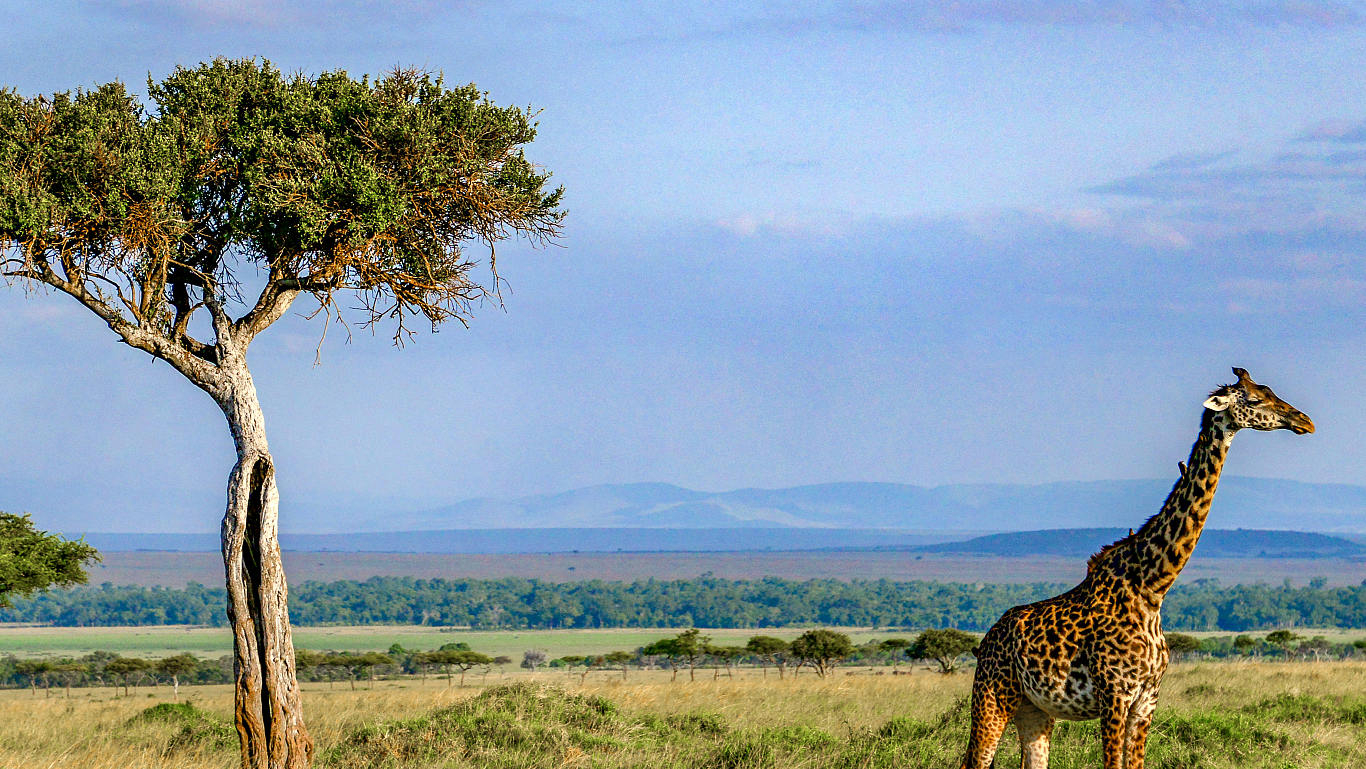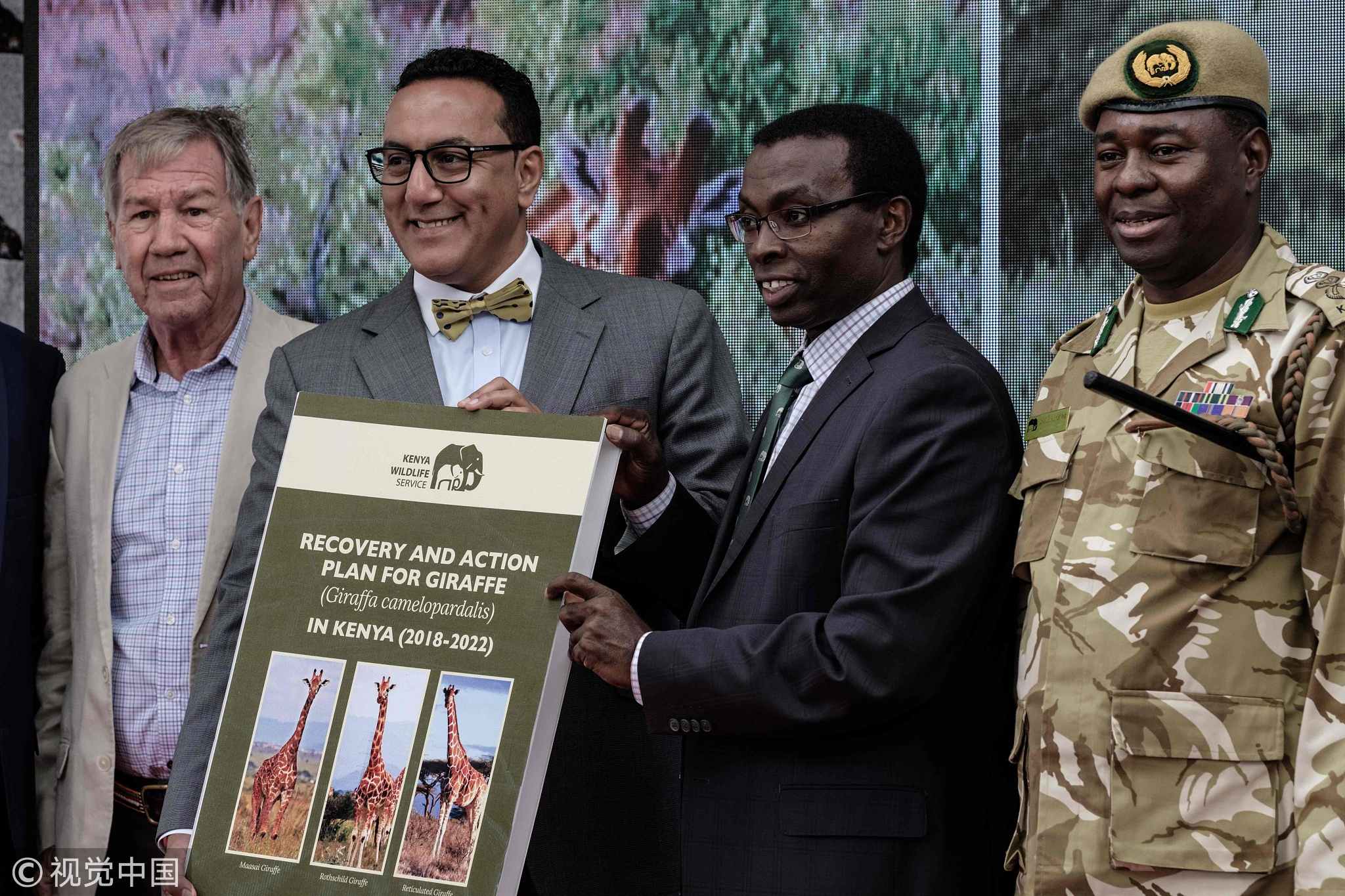
Nature
17:02, 22-Nov-2018
Kenya launched its first ever restoration master plan for giraffes
Updated
17:03, 25-Nov-2018
CGTN

The newly launched National Recovery and Action Plan for Giraffe is the first restoration master plan for the world's tallest land mammal in the country.
The plan was launched on November 21 in Kenya.
Covering 2018 to 2022, the initiative aims to address challenges for the sustainable conservation of giraffes in Kenya, whose numbers have reduced from 80,000 in the 1970s to the current 28,500.

Najib Balala (2L), cabinet secretary for tourism and wildlife of Kenya, John Waithaka (2R), Chairman of Kenya Wildlife Service's Board of Trustees, and Charles Musyoki (R), Acting Director-General of Kenya Wildlife Service, during the launch ceremony of the initiative in Nairobi National Park, Kenya, on November 21, 2018. /VCG Photo
Najib Balala (2L), cabinet secretary for tourism and wildlife of Kenya, John Waithaka (2R), Chairman of Kenya Wildlife Service's Board of Trustees, and Charles Musyoki (R), Acting Director-General of Kenya Wildlife Service, during the launch ceremony of the initiative in Nairobi National Park, Kenya, on November 21, 2018. /VCG Photo
Najib Balala, cabinet secretary for tourism and wildlife, said the government will channel additional resources to boost conservation and in order to root out bushmeat trade, which accounts for the declining number of giraffes, strong laws must be adopted.
Furthermore, an advocacy campaign will be carried out to help landowners and communities understand the importance and methods of giraffe conservation.
Charles Musyoki, acting director general of Kenya Wildlife Service (KWS), said surveillance of the vulnerable mammals in free range and protected areas must be strengthened by engaging law enforcement agencies and communities.

A Maasai giraffe eats leaves in Nairobi National Park, Kenya. /VCG Photo
A Maasai giraffe eats leaves in Nairobi National Park, Kenya. /VCG Photo
Thirty-six percent of the giraffe population in Africa lives in Kenya. However, the number has been dwindling mainly due to poaching, habitat destruction and fragmentation. At the same time, many are unaware that these tall animals are undergoing severe pressure.
According to the International Union for the Conservation of Nature (IUCN) Red List of Threatened Species, three of the giraffe subspecies are now listed as “Critically Endangered" (Kordofan and Nubian giraffe) and "Endangered“ (reticulated giraffe), while others range from ”Vulnerable“ to "Near Threatened."

Maasai giraffes eat leaves in Nairobi National Park, Kenya./VCG Photo
Maasai giraffes eat leaves in Nairobi National Park, Kenya./VCG Photo
Similar to other iconic animals like rhinos and elephants, giraffes play an important role in Kenya's travel industry. The recovery of the giraffe population can broaden revenue streams for local communities via tourism and benefit the country ecologically and socially.

SITEMAP
Copyright © 2018 CGTN. Beijing ICP prepared NO.16065310-3
Copyright © 2018 CGTN. Beijing ICP prepared NO.16065310-3